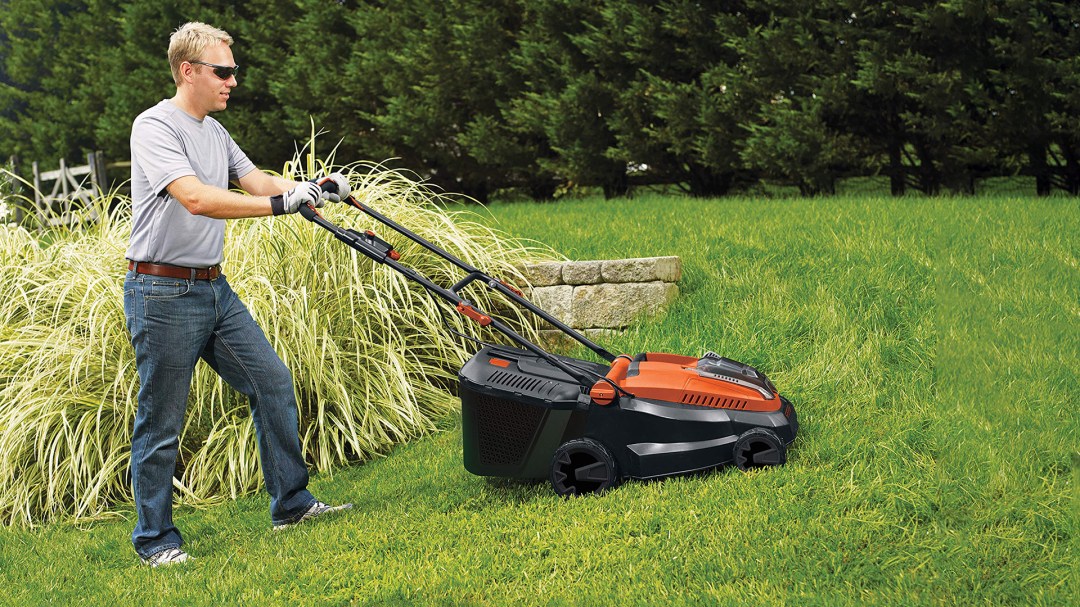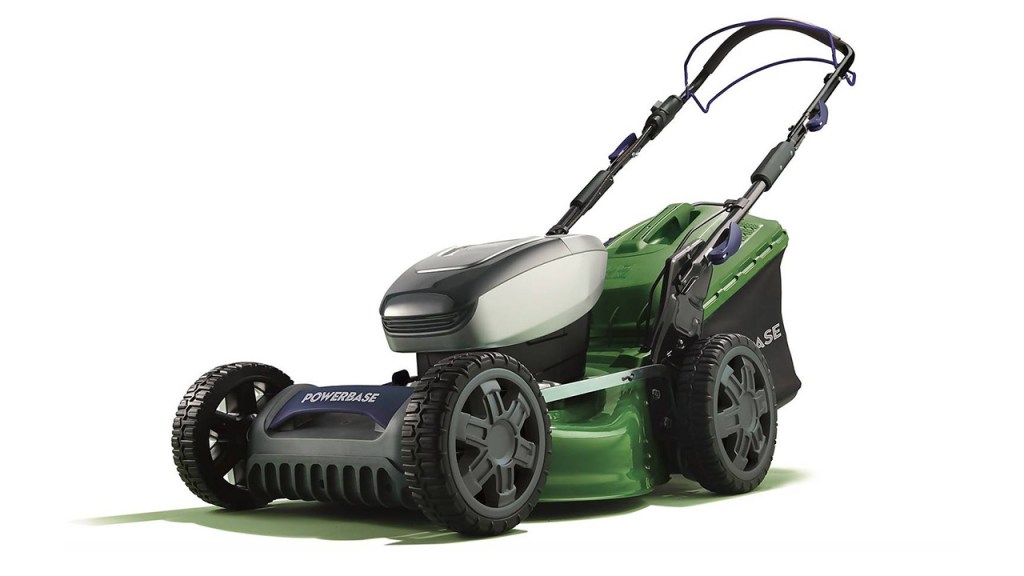Best cordless lawn mower 2024: battery mowers for all lawn sizes
The best cordless lawn mowers will cut better, faster, and with less effort than ever before

The best cordless lawn mower models are dramatically different to the models of just a few years ago: they’re smarter, lighter, more powerful and most importantly of all, they last much, much longer. They’re also significantly less expensive than the best robot lawn mowers.
If you didn’t already know, cordless lawnmowers are battery-powered mowers which are ideal for small and medium sized lawns (larger lawns might require spare batteries).
Unlike traditional petrol or corded electric lawnmowers, cordless versions operate using rechargeable batteries, offering quieter operation, reduced emissions, and sweet freedom from an annoying cord.
They consist of a cutting deck, housing the blade, and a battery compartment, allowing users to adjust cutting height and control the mower’s movement.
If you don’t need battery-powered mowers, or they’re a little too expensive, check out Stuff‘s guide to the best lawnmowers.
The best cordless lawn mowers you can buy today:

1. Ego LM2135E-SP
Ego is a relatively new brand that exclusively makes cordless garden tools and high-power batteries to fuel them. Its range even includes rechargeable ride-on mowers. Not a petrol engine in sight.
This self-propelled mower is powered by Ego’s signature 56V battery. The one supplied has a 7.5Ah capacity, enough to cut 1,000m², and recharges in just an hour. The battery and charger are both huge. And loud, the charger is fan-cooled. Other Ego 56V batteries, from 2.5 to 10Ah, are interchangeable between tools.
A lever on the side lets you fold the mower handle forwards, where it clicks into place flat. You can then tip the mower back to wheel it around vertically like a suitcase and even store it vertically for a pleasingly small shed footprint. The same lever selects from three handle heights. A spring-loaded knob at the side lets you pick from seven cutting heights.
Is it any good?
This was our favourite self-propelled mower on test, thanks to superb mowing performance and manoeuvrability. No assembly is required, you just clip the mesh grass box together and charge the battery. If you have a garden larger than 1,000m², its high-speed charging is great because batteries cost a lot. Take a lunch break and it’s ready to go again.
Our only quibble is that mulching requires an insert, sold separately, to clip into the back. At this price, we want it included. Though making it an optional accessory does reduce waste if you never mulch.
Mowing performance was very impressive, including great edges with barely any tufts. Press a central safety button and then pull the green wire up to the handle to mow. Your hands naturally rest on large buttons at either side to engage self-propelling. A control in the middle sets the speed.
It’s also pretty manoeuvrable, despite its size. The variable speed lets you mow long lengths with ease. Then the mower turns easily; it doesn’t feel heavy in use.
There’s a safety key under the hood and alert lights on the dashboard. To extend the car analogy further, there are twin headlights (three LEDs on each side) for late-night mowing sessions.

2. Husqvarna LC 142iS
Of the self-propelled mowers on test, this is the only one that can’t be stored on its end. The handle double-folds, to sit on a shed floor or shelf, but we still prefer the smaller footprint of mowers that can be stored upright. This kit comes with a single 36V 4.0Ah battery and charger. It’s fairly heavy. One good handle on the body helps with lifting but the fact you can’t store or wheel it vertically is frustrating.
Self-propelled, it goes at a single speed of 4km/h, a medium walking pace. The controls are pretty straightforward. Pull the wire handle underneath up to the main handle to get it moving. To mow, flick a safety lever on the left out of the way, then pull down the top handle. It can move, mow or both. A handle over the back-right wheel chooses from seven cutting heights.
Is it any good?
Assembly only takes five minutes. But mowing is frustrating compared with others on test, for a couple of reasons. First is mowing performance: it stalled too often, in conditions where other mowers coped fine. The self-propelling worked, and the mower wasn’t blocked with clippings, it just struggled to mow at times.
Under the hood, there’s a safety key and what looks like a power switch. The switch engages its savE energy-saving mode for a longer runtime. We flicked savE off, but the mower still stalled on longer grass that other mowers could handle. Edge performance is a bit tufty but ok.
Changing between the two handle heights is also annoying, compared with similar mowers. You must remove a bolt, washer and knob on each side and replace them in different holes.
Mulching requires an optional kit. This contains a mulch plug, to take the place of the mesh grass box, and special mulching blades. Yes, you have to change blades to mulch. Again, unnecessarily fiddly.
The self-propelling single speed is also annoying, compared with a variable speed. Fewer controls to think about, but we’d rather be able to tailor the pace.

3. WORX WG779E.2
This excellent all-rounder from WORX uses twin 20V batteries to deliver exceptional cutting performance, and with a large 34cm cutting area it makes quick work of any lawn. Its Intellicut technology, which you’ll find across the WORX range, adjusts the speed and power to the grass conditions to give you a consistent cut. Its edge to edge design gets you very close to the ends of your lawn, and because it uses WORX’s Power Share technology the batteries are shareable with other WORX garden and power tools. It’s good to see that the charger is designed to charge both batteries at the same time.

4. Bosch EasyRotak 36-550
If you’re thinking of getting a brand such as Bosch it’s a very good idea to keep an eye on the deals pages: at the time of writing this mower, which has an RRP of £386, is selling for much less than that – making it less expensive than a smaller, less powerful mower from the same firm. This Bosch is a large 36cm cutter with twin 20V batteries designed for lawns up to 350m2, and its grass combs do a great job of getting the grass at boundaries such as driveways, fences and walls. There’s some thoughtful design here, such as the ErgoFlex handles that enable you to operate the mower in whatever hand position feels most comfortable.

5. Yard Force LMG37A
Here’s another petrol alternative with 40V of power. The Yard Force is built to a budget and isn’t quite as flexible as the equivalent WORX – it has a considerably smaller cutting area, its maximum cutting length is shorter, its collection bag is smaller and it isn’t self-propelled – but it’s an excellent option for smaller lawns if you’re looking for a powerful mower on a tight budget. It’s easy to move around and comfortable too.

6. WORX WG749E NITRO
It used to be the case that if you wanted to mow a big lawn, you needed a petrol mower. Not any more. WORX’s excellently named Nitro has a huge 46cm cutting area, powered rear wheels, seven height settings and the same clever Intellicut technology as WORX’s other cordless models. With twin 20V batteries delivering a sustained 36V and a peak of 40V it’ll deliver up to 40 minutes of continuous cutting, enabling you to tame even the toughest lawns.

7. Gardena Handymower
Most of the mowers here are overkill for really small lawns. The Handymower, though, is ideal for little lawns: small and manoeuvrable like a strimmer but with the consistent cutting length you expect from a mower. Designed specifically for lawns up to 50m2 it uses the cross-platform 18V Power For All batteries (not included) and runs for up to 60 minutes. The Power For All Alliance is a group of tool manufacturers who’ve agreed to share a single battery standard for 18V tools and includes not just Gardena but Bosch and Flymo too.

8. Black and Decker CLM3820L
If you’ve already invested in some Black + Decker cordless power tools, this mower uses the same twin batteries as other 36V equipment you might already own. It doesn’t cut quite as short as some rivals – the minimum here is 30mm compared to some others’ 25mm or lower – but there’s a longer 80mm setting as well as large wheels for more difficult ground. The 38cm cutting area is ideal for medium-sized lawns and B&D’s stall-free motor copes very well with tougher, longer grass that may defeat more modest models. Buying it battery-free cuts the cost considerably. Definitely one of the best cordless lawn mowers around.

9. Powerbase 40V Cordless Lawnmower
Homebase’s Powerbase brand offers fuss-free tools for decent prices, and at the time of writing this model is much cheaper than its already low RRP of £189. That’s for the 34cm model; there are also 37, 40 and 46cm models for larger gardens. It’s a twin-20V model with a dual-battery charger, a rear roller for a striped effect, a 35L bag and a choice of five cutting heights from 25 to 75mm. It’s not the most refined mower you can buy and it’s a little louder than some rivals, but it’s a decent budget buy.
How to choose a cordless lawn mower
There are two key things to consider here: the cutting size and the battery. The bigger the cutting area the less time it takes to mow the lawn, and the more battery power the longer it’ll run. For large lawns it’s wise to look for mowers with either very large batteries or twin batteries so you won’t run out of power before the job is done.
One of the really great developments in cordless tech is the arrival of swappable battery packs, so for example if you buy a Worx, a Black + Decker or a Bosch you’ll be able to use the battery and charger in other tools – your strimmer, your hedge trimmer, your tree lopper and so on. Rather brilliantly the same sharing happens not just with garden power tools but all power tools, so that battery can also power your hammer drill, sander and in some cases even your pressure washer. That saves you money, because you don’t need to buy a battery with every new tool, and it’s better for the environment too.
As a rule of thumb, the more volts a battery pack has, the better: 20V (36V or 40V in a twin-battery mower) is the sweet spot between performance, portability and shareability right now. Voltage doesn’t affect the battery life – that’s measured in amp hours, AH – but it does affect how much power is going to the motor.


